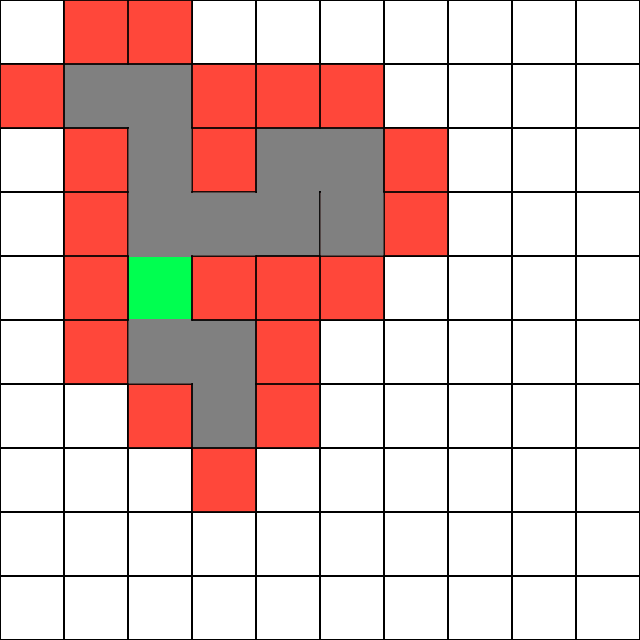The Generation Algorithms
In order to generate mazes with a variety of styles, four different algorithms were implemented for both 2D and 3D with one having further custimation for more variation. Each algorithm creates a different style of maze.
Recusive Backtrack

Pattern:
- Pleasing, random appearance
- Relatively long sections before a branch
Algorithm:
- Works by randomly selecting a path until there are no more valid moves (there are no unvisited adjacent cells)
- Next moves back until another move is possible
- Continues until the whole maze has been visited
 |
 |
 |
 |
 |
 |
Recusive Division

Pattern:
- Lots of intersections between paths
- Long straight lines of walls
Algorithm:
- Randomly places a wall dividing the maze in two and picks a random opening
- Then does that same division with the two new sections
 |
 |
 |
 |
Prim's Algorithm

Pattern:
- Lots of intersections between paths
- Shorter and more random wall segments
Pattern:
- Picks a random starting point
- Continuously picks a random cell from the unvisited neighbors of the current visited cells
 |
 |
 |
 |
 |
 |
Growing Tree Algorithm

Pattern:
- Can look like Prim’s, Recursive Back-tracker, both and more
- It depends on the parameters
Pattern:
- Pick a random cell and store it in a list
- Randomly pick more cells until no longer possible
- Once a dead-end is hit, use some condition to pick the next cell to iterate from
Parameters:
- New: Picks the newest cell to be added to the list to continue from; works exactly like recursive backtrack)
- Old: Picks the oldest cell still in the list to continue from; causes lots of straight paths originating from random starting point
- Random: Picks a random cell from the list to continue from; works and looks similar to Prim's Algorithm